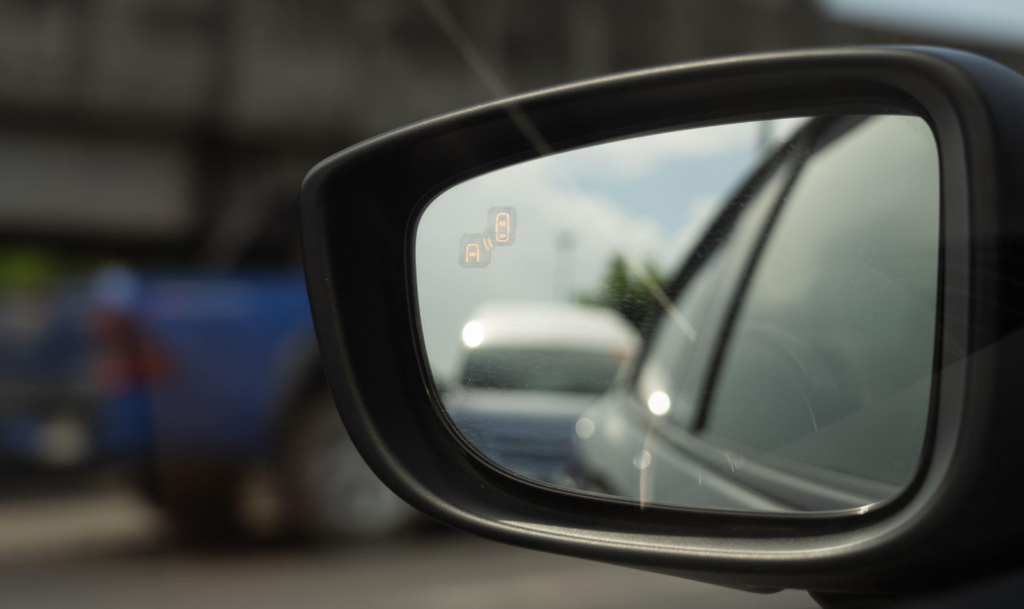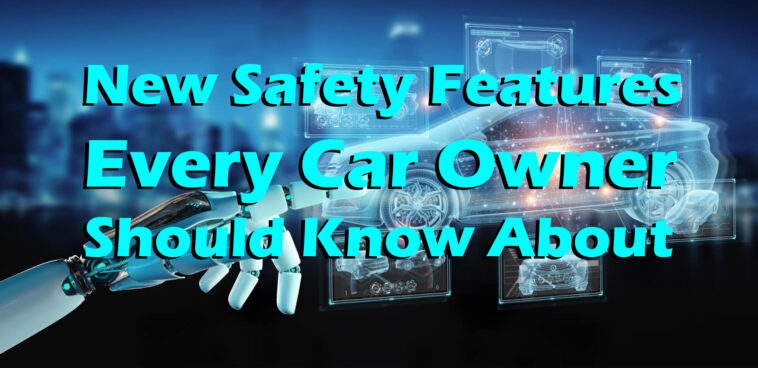The automotive industry is moving into the connected car technology era, and, hence, it is logical to know the diverse safety features they are associated with. These features not only deal with how we use our vehicles differently but are also a breakthrough that represents two significant factors, an increase in safety and an improvement in intelligence for the driver. Whether you dart down the city streets or get on the freeway, knowing about these safety solutions in new cars can make your trip a lot more enjoyable.

Automatic Emergency Braking (AEB)
The AEB system utilizes sensors, radar, and cameras – to decipher danger signals – from the front part of the car. It is the system that involves the recognition of potential danger in front of the car. While it is accustoming, a sound and visual alarm will be followed if a danger is detected. Otherwise, AEB system will soon take control of applying the brakes for your vehicle if you don’t respond very fast. This takes a few seconds and may be extremely helpful in emergency or accident situations when the reaction time of the drivers may not be fast enough to prevent something from happening.
For example, say you’re on a busy freeway, and in the worst situation you’re cutting in front of another driver and forcing them to brake. Your car has unexpectedly entered the path of the car in front of you. By just the time it takes to assess the condition and get your reflexes into action, the car’s AEB function has already started the braking process, possibly averting one.
Adaptive Cruise Control (ACC)
ICC has a function of additional cruise control compared to the traditional one. The ACC, which is an antithesis of the traditional cruise control that maintains a given speed irrespective of any traffic changes, automatically adjusts the set speed to a safe following distance from the car to your front. It is based on the use of either radars or lasers sensing the traffic ahead, then automatically speeding up or slowing down as the occasion demands.
One of the significant advantages of ACC is that it helps driver to control themselves from falling asleep. High-speed long drives (especially on the highways) are considered boring and straining as you have to be watching out whether you are following the speed limit or observing if it is possible to overtake the slower moving traffic. ACC reduces the interference of stopping and speeding up by regulating the automatic closing of the gap between the vehicle ahead of you by acting on the brake and accelerator. Hence, you now focus more on the steering and less on controlling the accelerator and brake pedals.
Blind Spot Detection
Sides and rearward attentions are monitored from where you cannot see these points properly. One of the methods is to use sensors or cameras. If indeed the vehicle, or cyclist, or pedestrian melts into the “blind spot,” the system will automatically detect it and warn the driver. The indicator may be visual (for instance a light on the side mirror), audible (for example sound from a car speaker), or tactile (for example vibration in the steering wheel), and this allows you to avoid a potential break during the lane change or while in reverse.

Lane Departure Warning
Lane departure warning system is based on the camera and sensor that track the lines marked on the road by using them. If the system finds out that the vehicle has unintentionally steered out of its lane without any indication of the use of a turn signal, it will warn you with the help of AVI, audio, or tactile signals. This alert notifies you before a car accident happens, thus allowing an appropriate shift of your trajectory.
For instance, you find yourself in a torrential downpour, and for a short while, you drift away from the road and lose focus, looking at the rain. You stuff your right lane and your car gets into the shoulder of the adjacent lane. Meanwhile, you are not banging the car next to yours after a deceptive LDW alert but simply correct your course.
Forward Collision Warning (FCW)
FCW relies on sensors, cameras, or radar to watch out for possible collisions between the vehicle and pedestrians, objects in the road, or any other oncoming vehicle as the vehicle is in motion. If the system finds anything that could lead to an accident, which may be flash on light, sound the alarm, or vibrate the wheel or seat of the driver, depending on the severity. The purpose of making the yellow light longer is for you to have time to brake and therefore prevent a car crash.
For example, if you are driving in a city and a pedestrian appears suddenly out of the curb right in front of your car, the ligth of FCW system immediately goes on, sending you an alert to stop the car in time.
Rearview Cameras
Rearview cameras provide a direct vision of what is in immediate proximity of your car that may otherwise be obscured by both rear and side mirrors. Backup cameras broadcast a live video to your car’s monitor as soon as you change gear from “Drive” to “Reverse” (Drive-Reverse). It turns into vital when the driver can’t see something that may be in their blind spot. Hence, the technology is crucial to ensure that there will not be any backup collisions.
For instance, the instances can be when a kid or a pet may be playing behind your car or if there are obstacles like bollards, curbs, and bollards which are low-lying in front of you. Indeed, instead of rearview cameras, which can become really lifesavers offering the vital visibility and preventing the unpleasant accidents in these cases, we may say that in the opposite situation side cameras may be installed.
Cross Traffic Alert
The crossing traffic alert function detects the movement of cars, pickup trucks and SUVs which may be approaching from the side and rear of the vehicle when you back out from a parking space. It (the safety feature – that safety feature uses radar or ultrasonic sensors to monitor the area behind and around the vehicle for any moving objects crossing its path), is utilized to prevent any accidental collision. When it senses an approaching car, the system gives you a few cues, which can be visually, acoustically, or manually seen, allowing you to stop or slow down in order not to crash.
Let’s take this instance when you exit the parking space inside a busy shopping mall lot. From their dynamic nature, it follows that cars never pass by you but always are in your sight with the parked ones just covering the view. A cross traffic alert is an improvement that will inform you of an impending vehicle that you can not see before it is detected, and this warning will save you from backing your vehicle into the car which is coming from behind.
Automatic High Beams
Automatic high beams are based on using sensors that monitor the amount of light space if there is an oncoming vehicle or those ahead in the same line. This enables the light intensity to be heightened when there is a longitudinal line in front and illuminance is low, which thus enhance the road viewing capabilities. However, when it detects the headlights of a car coming toward the road or, when it senses tail lights of cars that are in front of you, it immediately shifts back to low beams and does not dazzle other drivers.
Conclusion
Realizing the advantages of these safety features is important for modern cars owners, not only from the safety point of view but also from the replacement parts financial point too. Many car insurance companies these days have an incentive in place for vehicles that have been installed with safety features since they have a decreased risk of an accident happening to them. The consequence might be that some of the car insurance providers are even ready to offer you discounts for being their client. But, accidents do happen, so having a round-about knowledge of car insurance claims is also essential. Your insurer needs all the documented details, including the supporting documents to file a claim.


